“Go Bloomington” branding for promotion of transportation options to launch in early September
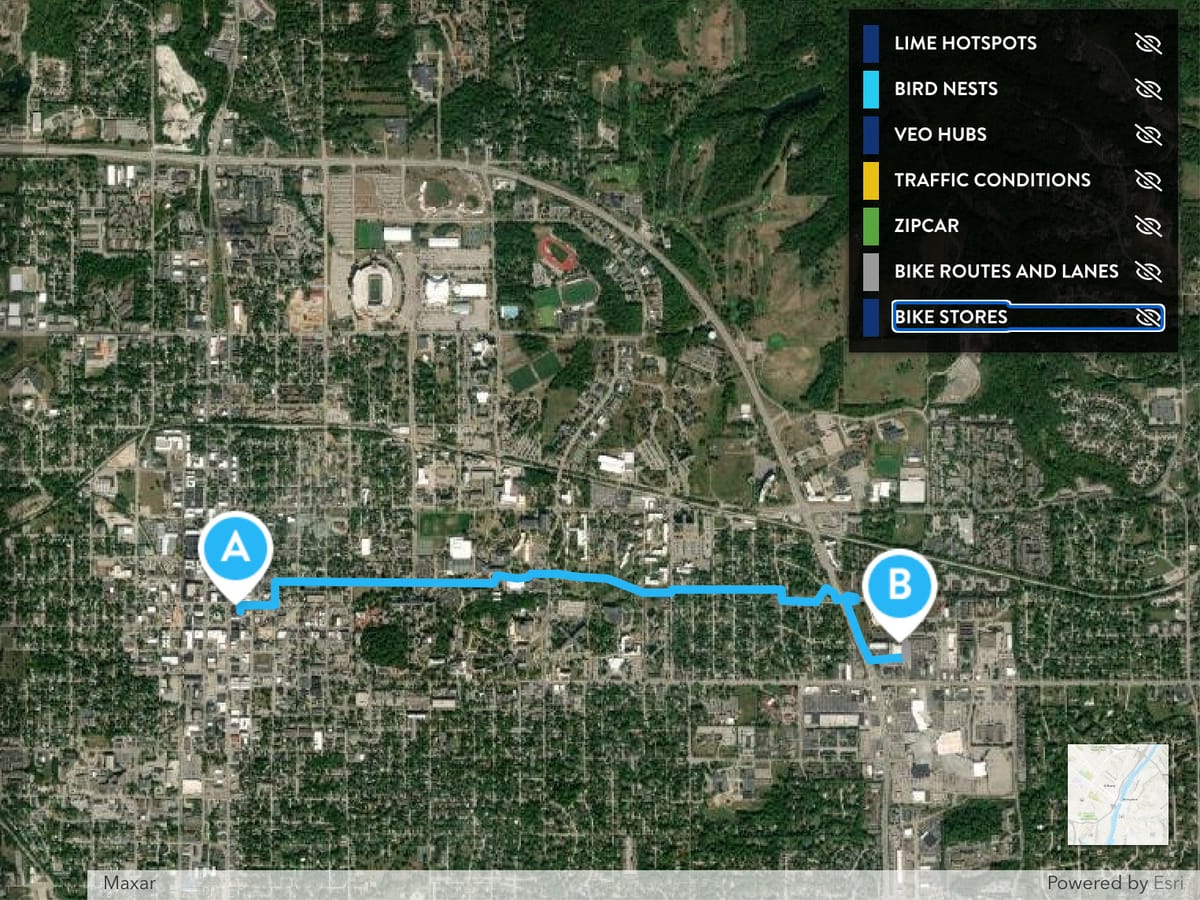
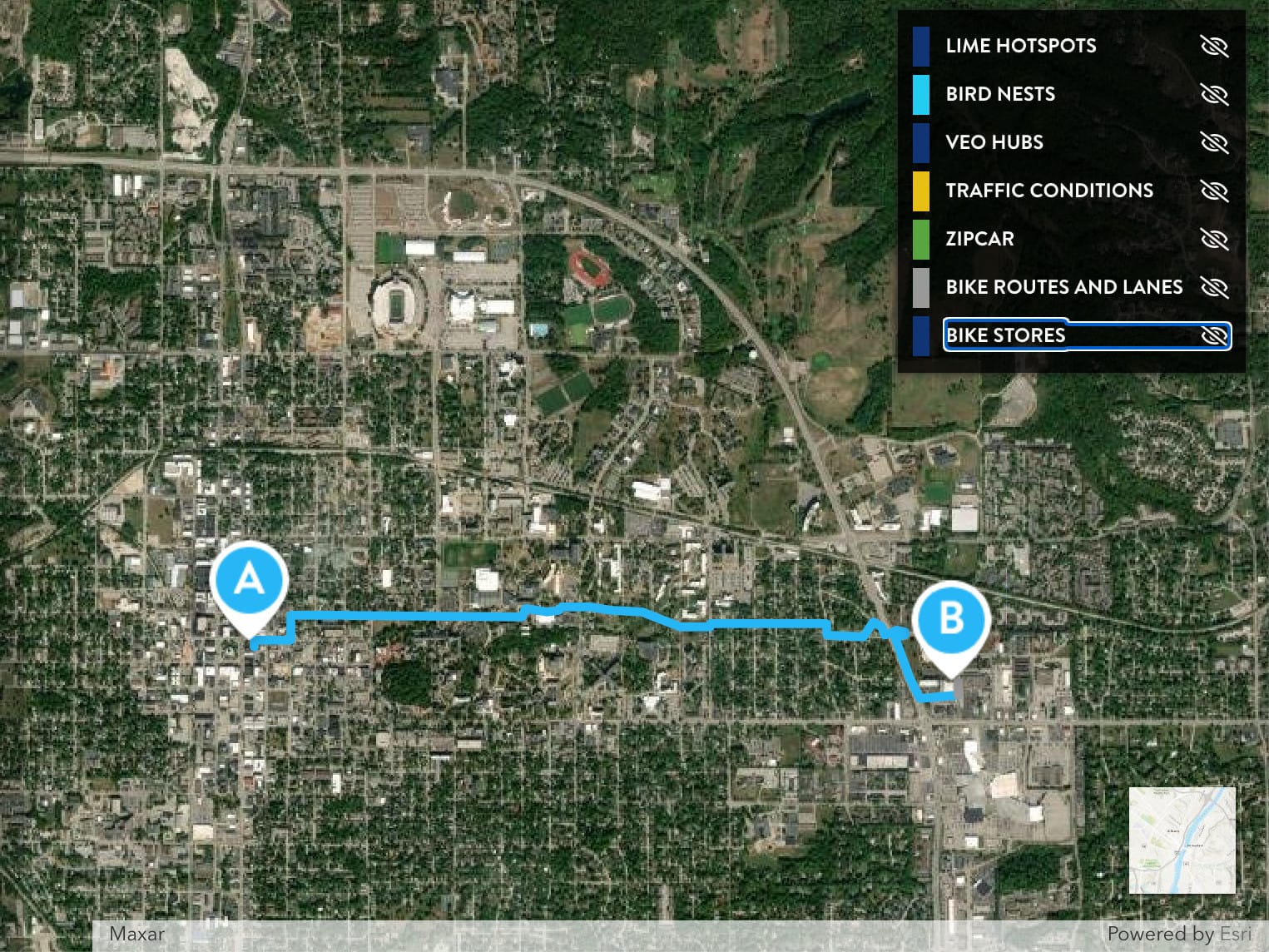
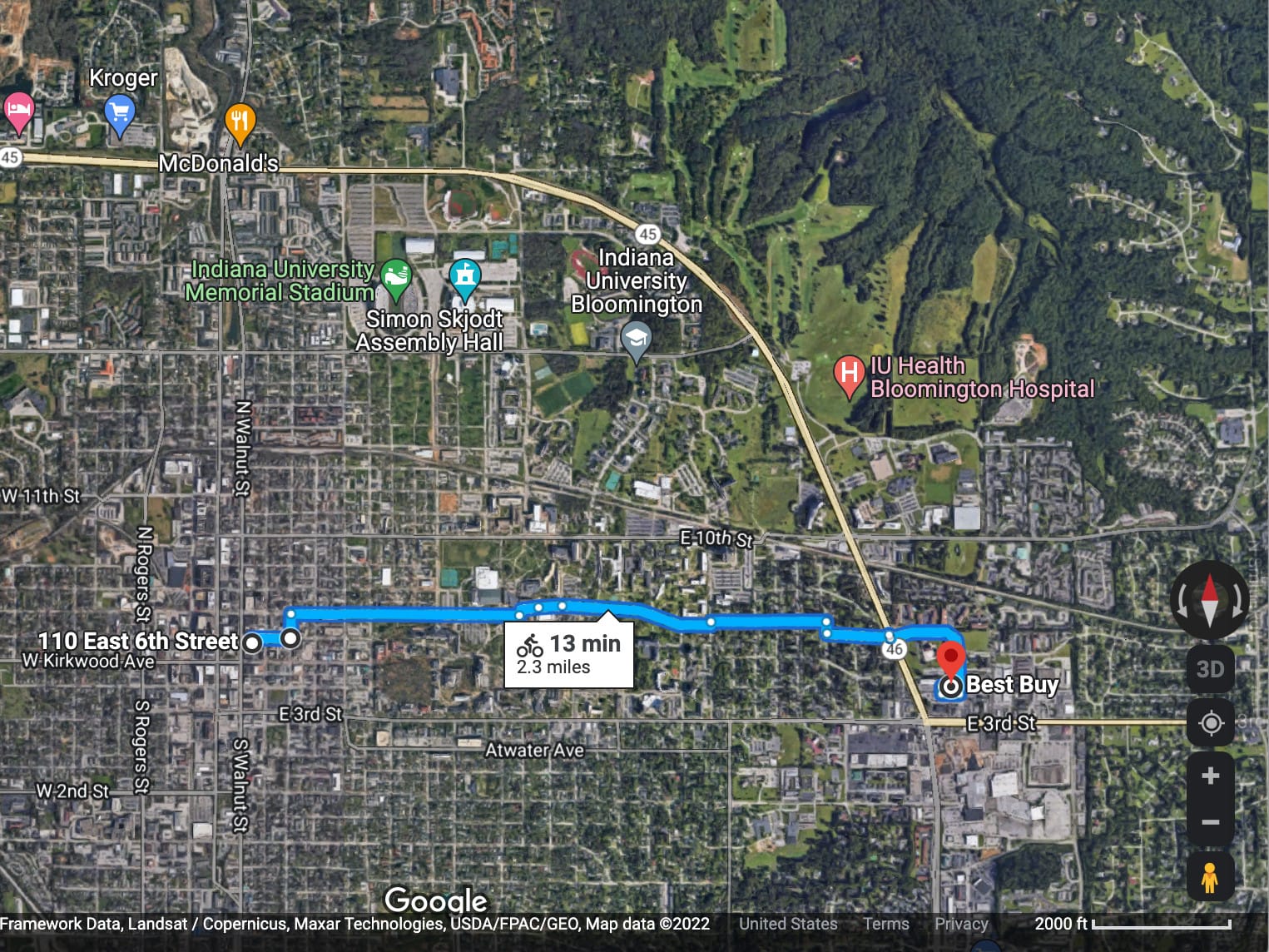
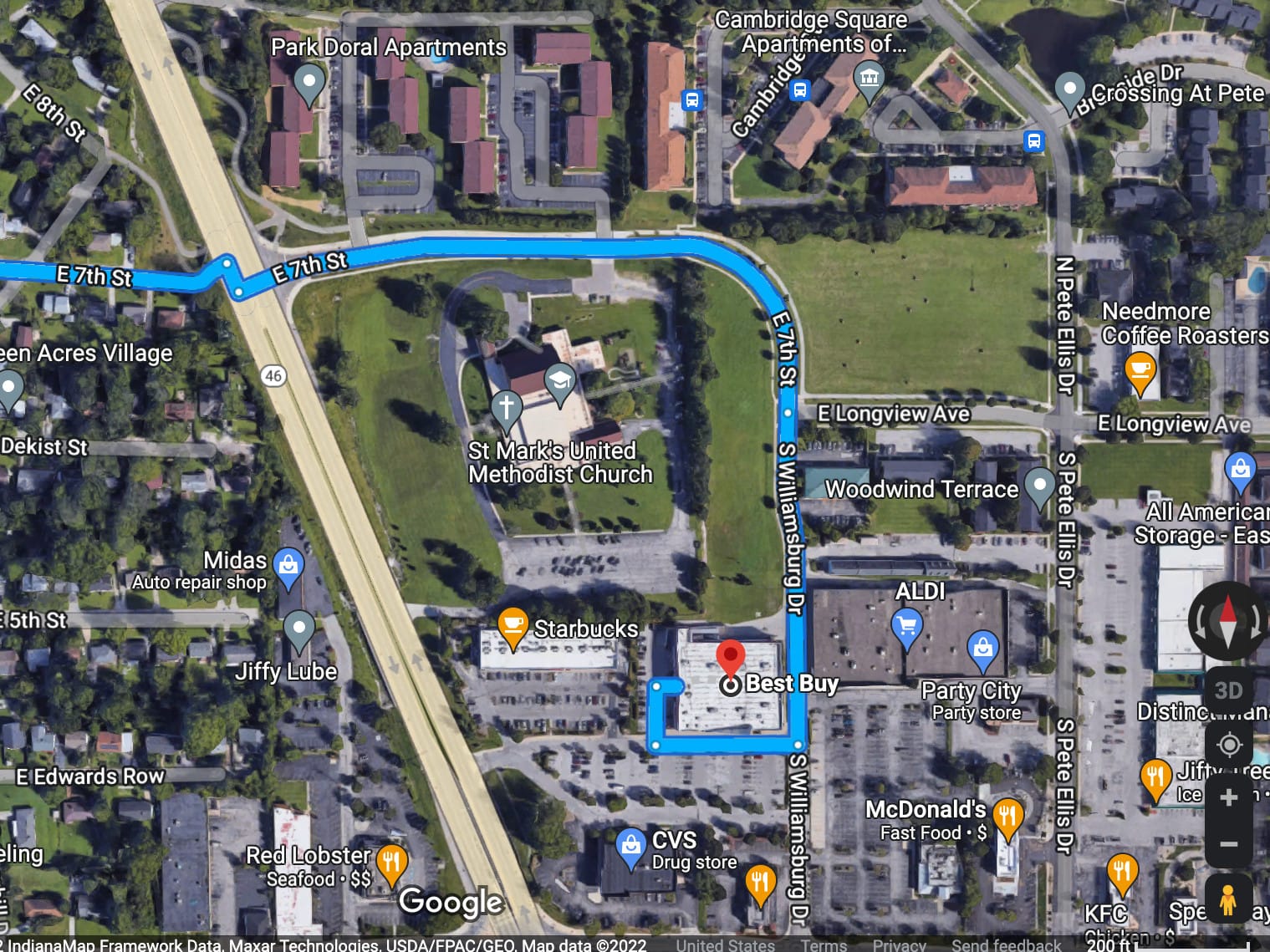
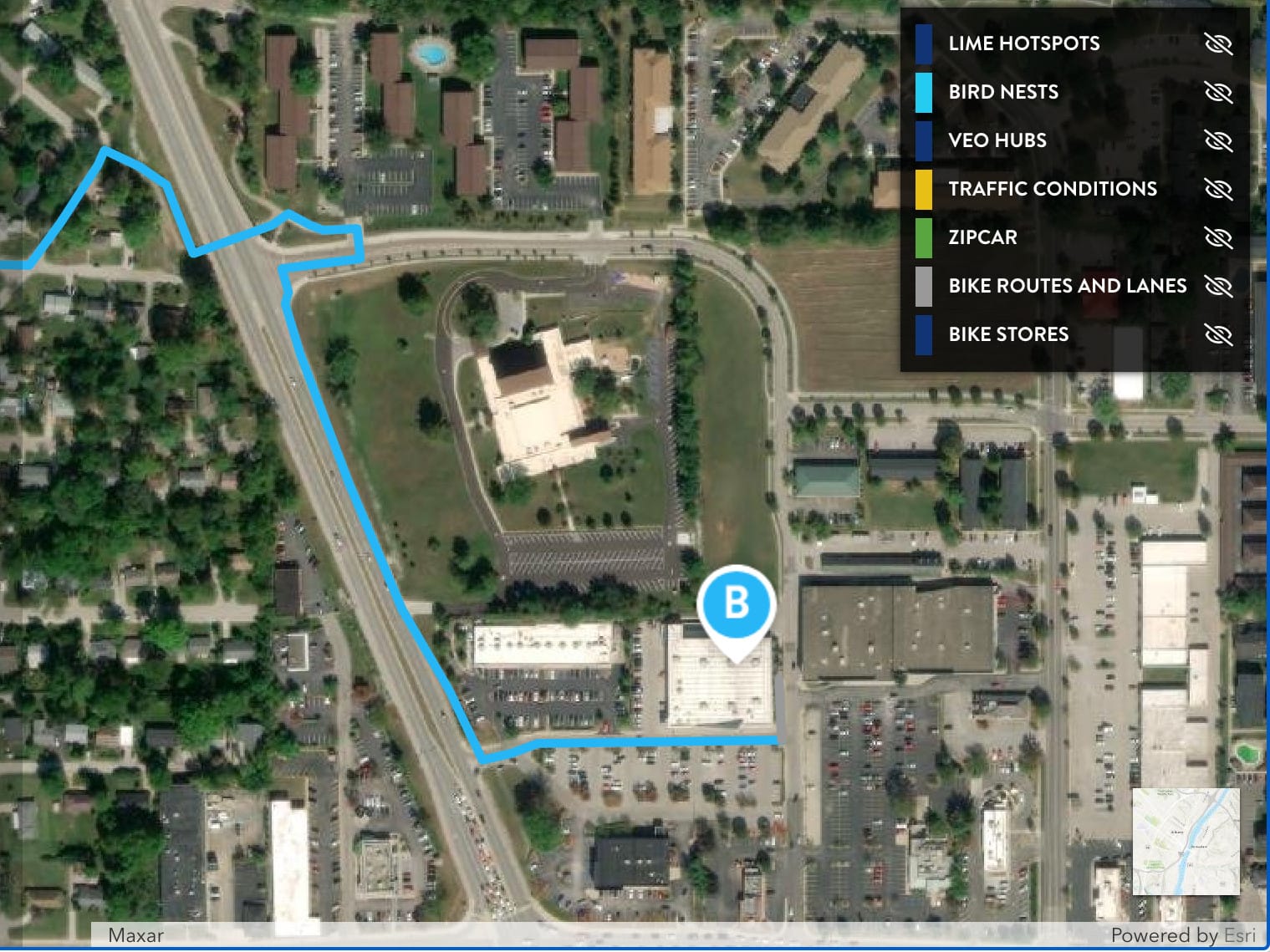
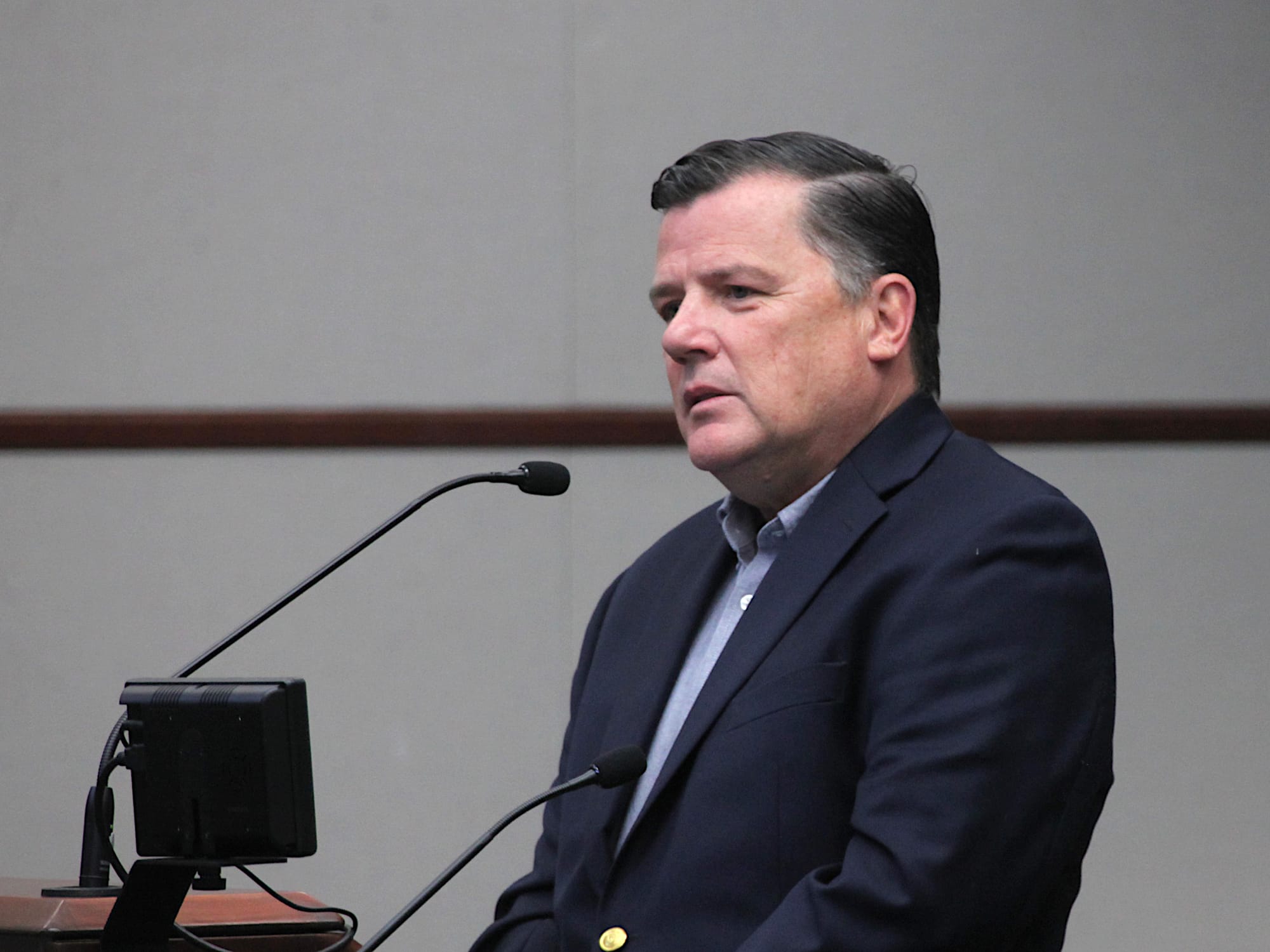
The formal launch of Go Bloomington is set for Sept. 6 at 2 p.m. That’s the branding that has been chosen for the city’s effort to promote transportation options that are different from driving alone.
It’s meant to help the city achieve a number of goals, including: reducing carbon emissions; optimizing use of parking capacity; and decreasing traffic congestion.
Some options that will be promoted by Go Bloomington as preferable to driving alone in a car will be: walking, bicycling, riding the public bus, riding shared electric scooters, carpooling, vanpooling and telecommuting.
At their Wednesday meeting, Bloomington city councilmembers were briefed on Go Bloomington by the city’s transportation demand manager, Jeff Jackson.
It’s a new position in city government, which the city council authorized as a part of its approval of the 2021 budget. Bringing Jackson on board took the city two rounds of recruitment effort—the job was posted first in March of 2021 and then again in September of that year. Jackson started work as the city’s TDM on Nov. 1 last year.
By way of introduction, Jackson told councilmembers he graduated from Indiana University in 1985, with a major in transportation, drove a bus for Bloomington Transit (BT) and interned with BT during his junior year. He then ticked through a number of positions in the transportation industry, including public transit agencies in Florida, and a stint as executive director of the Central Indiana Regional Transportation Authority (CIRTA).
The Go Bloomington branding was part of the work done by the Affirm Agency to market the program, Jackson said.
Based on Bloomington’s online financial records, Affirm has been paid about $41,000 for their marketing work so far.
The website that has been created lives at the URL gobloomington.org
The website offers a way for registered users to keep track of their commutes using alternatives other than driving alone in a car—in order to compete with other users or to qualify for incentives.
The website also provides a matching service for potential participants in car pools or van pools. Carpools and vanpools are successful mostly when the members all live in the same vicinity or along a route to the same general work vicinity. It can be a challenge to find other like-minded folks who are a good geographic fit.
A matching service has been integrated into the Go Bloomington website by a company called RideAmigos. Jackson highlighted the local connection to RideAmigos—the company’s chief technical officer, Ben Dalton, and chief security officer, Mark Stosberg, both live in Bloomington.
Among the features of the Go Bloomington website is a route-finding tool for different modes. For example, given point A and point B, what’s a good way to get by bicycle from A to B?
The B Square took the tool for a spin by comparing Go Bloomington results to results from Google Maps, which provides a similar service. The test origin was B Square headquarters on 6th Street in downtown Bloomington. The test destination was Best Buy on 3rd Street.
Both routing services recommended hopping on 7th Street for most of the trip eastward. And both services seem to know that 7th Street leads to the SR 46 underpass, which helps avoid the SR 46 and College Mall Road intersection.




But Go Bloomington’s routing analysis knows it’s better to turn north on Overhill for a short segment, then down the paved path extension of 8th Street for the bit just before the SR 46 underpass. The Google Maps route stays on 7th Street until the very end, which would mean scrambling down a relatively steep dirt path to the underpass.
Go Bloomington’s routing analysis also knows about the multi-use path along SR 46 south of 7th Street—that’s the route it recommends. But Google Maps does not seem to know about the path, or else thinks continuing east for a bit, then looping around, is a better route.
When the city council authorized the creation of the TDM position in 2020 for the 2021 budget year, it came with some grumbling, even from members of the council who are supportive of the TDM concept. They felt that instead of being housed in the city’s department for economic and sustainable development, that it should be a part of the planning and transportation department.
Councilmember Steve Volan said at the time, “The people who should have the last word in determining [transportation policy], besides the mayor, should be planners—not economic development officials, not public works officials, not engineers.”
The 2020 TDM plan, for which the city paid Wells + Associates about $108,000 to develop, said that “…either the city’s public works department or planning and transportation department is best suited to house the program.”




Comments ()